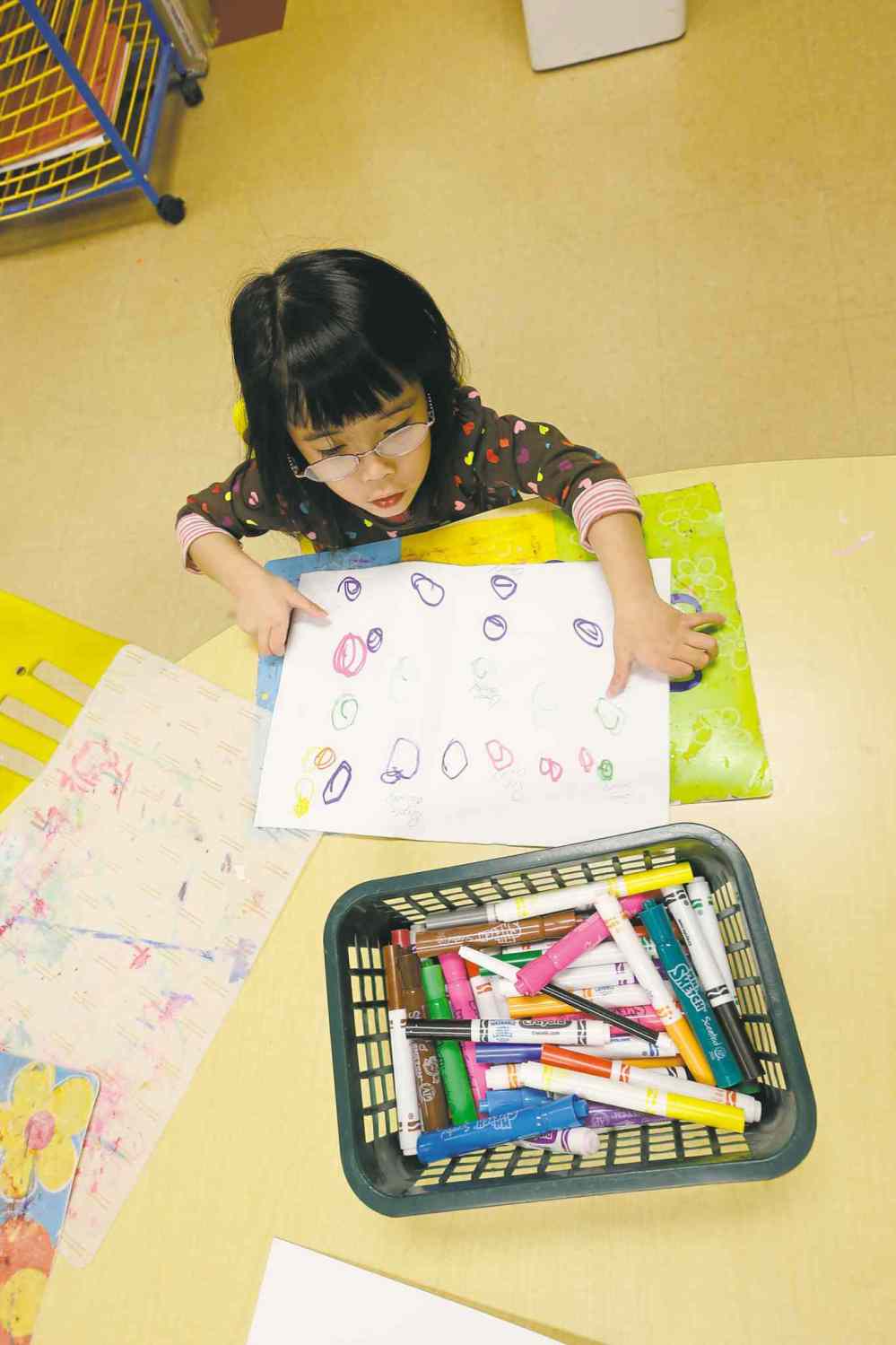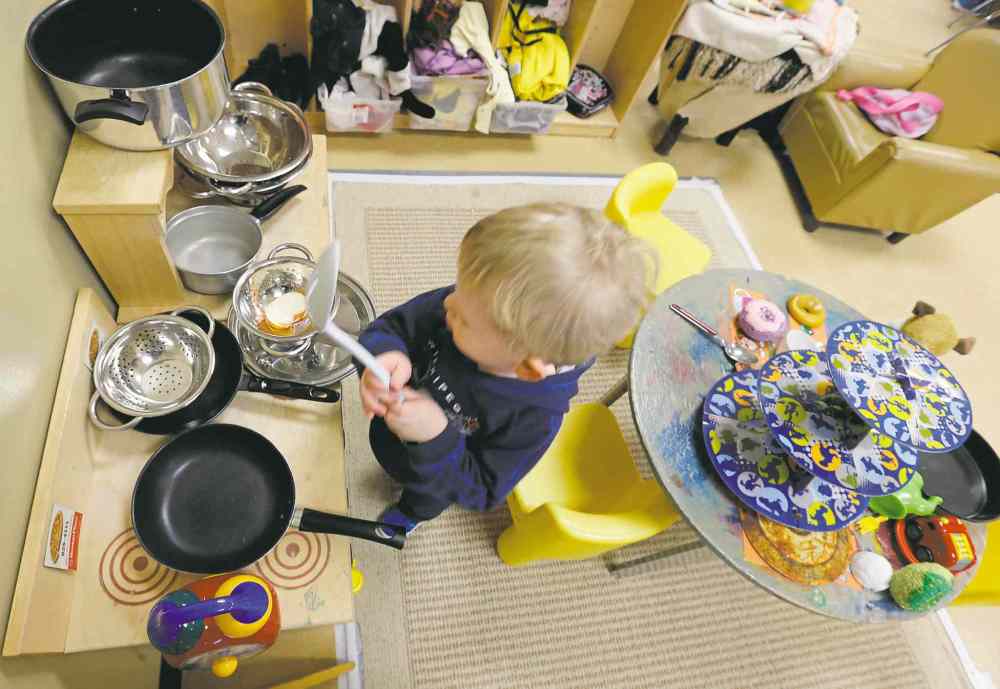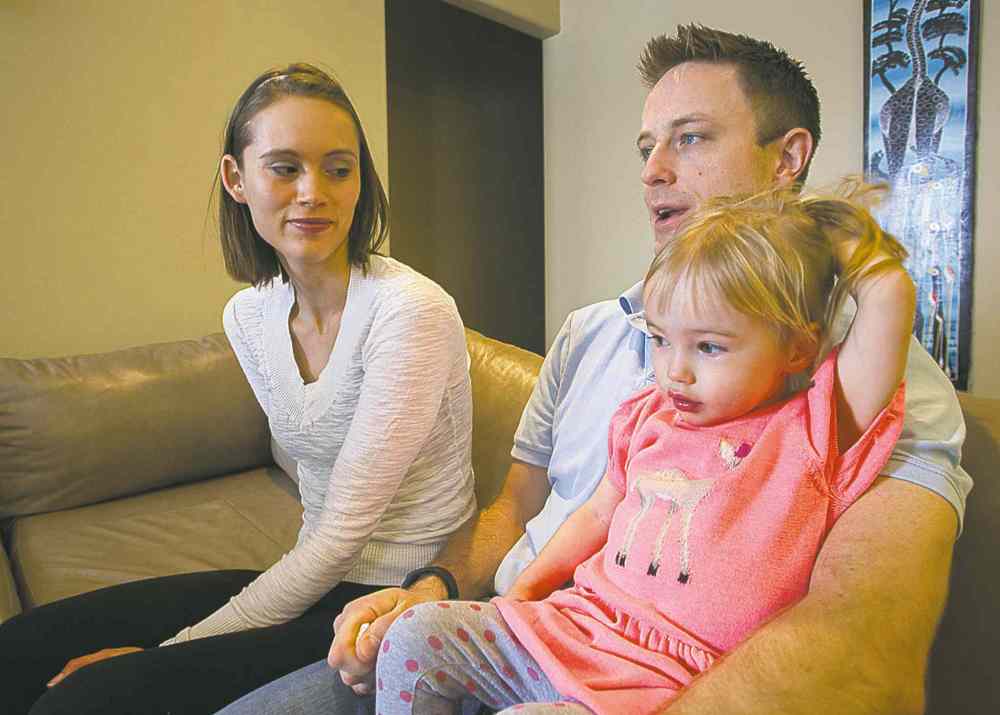The daycare dividend
Overhaul would thrill parents — but governments would be biggest winners / D7-10
Advertisement
Read this article for free:
or
Already have an account? Log in here »
To continue reading, please subscribe:
Monthly Digital Subscription
$0 for the first 4 weeks*
- Enjoy unlimited reading on winnipegfreepress.com
- Read the E-Edition, our digital replica newspaper
- Access News Break, our award-winning app
- Play interactive puzzles
*No charge for 4 weeks then price increases to the regular rate of $19.00 plus GST every four weeks. Offer available to new and qualified returning subscribers only. Cancel any time.
Monthly Digital Subscription
$4.75/week*
- Enjoy unlimited reading on winnipegfreepress.com
- Read the E-Edition, our digital replica newspaper
- Access News Break, our award-winning app
- Play interactive puzzles
*Billed as $19 plus GST every four weeks. Cancel any time.
To continue reading, please subscribe:
Add Free Press access to your Brandon Sun subscription for only an additional
$1 for the first 4 weeks*
*Your next subscription payment will increase by $1.00 and you will be charged $16.99 plus GST for four weeks. After four weeks, your payment will increase to $23.99 plus GST every four weeks.
Read unlimited articles for free today:
or
Already have an account? Log in here »
Hey there, time traveller!
This article was published 24/01/2015 (3967 days ago), so information in it may no longer be current.
Macy Wight, with her giraffe dress and bunny sneakers, can’t decide whether to ask for more upside-down tickles from her mom or keep snacking on whatever her dad delivers next from the kitchen.
“Doats!” she points to the nearby bowl of peanut-butter toast cut into squares.
Macy is a spunky, squealy, typical, middle-class toddler. Shortly after her birth, her parents, Sonya and Mitch, had a typical middle-class panic.

“Basically, a month after she was born, I started hearing from other moms about how impossible it was to find daycare,” said Sonya Wight, a pharmacist. “A lot of them were going back to work in a month or two and couldn’t find anything.”
The Wights immediately put Macy’s name on the province’s online daycare waiting list, researching and choosing a dozen centres in a wide swath of Charleswood, Linden Woods and Tuxedo.
About a month before Wight was slated to return to her pharmacy, she started working the phones, checking to see where she was on the waiting lists. She was number 500 at one daycare, 600 at another. Several daycare directors just laughed at her. Some didn’t return her calls. The couple were starting to think about calling in favours with friends who might help them finagle a spot in a home daycare, which wasn’t their first choice.
“I was just in panic mode in that point,” Wight said. “I didn’t realize it was that bad.”
It is that bad. And, long wait lists and last-minute scrambles are just part of our perennial problem with child care.
Despite huge investments by some governments — Manitoba has tripled the provincial budget for child care in the last 15 years — and despite three decades of different promises, policies and programs from the federal government, Canada still is at the bottom of the international barrel among industrialized nations when it comes to child care.
We spend the least in the industrialized world on it, and experts say we aren’t even talking about it in the right way.
Most of the debate about child care revolves around public or private services, licensed or unlicensed care, the number of spaces, staff-child ratios and cost for parents. In the next federal election, you will see a marked difference between the offerings of the Conservatives and the NDP — the former believing money for child care is better spent with direct subsidies to parents through the Universal Child Care Benefit (going up to $160 a month for children under six this year) and the latter pledging a multibillion-dollar national child-care program to create 370,000 new spaces across the country for which parents will pay a maximum of $15 a day.
All these things are critical to fashioning a quality child-care system. But the real discussion about why we should do this rarely gets heard.
Economic experts and child-care studies worldwide point to two things. First, investing in child care has one of the biggest returns on investments governments see in any sector. Second, a child who gets a decent start in education in the preschool years has a much brighter future.
Long-term costs for everything from the criminal-justice system to health care, child welfare and poverty programs could all go down if more kids get a better and earlier start on education.
In conversation with a dozen parents and the province’s three top experts on child care — the University of Manitoba’s Susan Prentice, the Manitoba Child Care Association’s Pat Wege and Don Giesbrecht, the Winnipeg-based head of the Canadian Child Care Federation — it’s clear we need to have a broader and more radical debate about what daycare really means.
First, though, the good news.
Manitoba has, by nearly every account, the second-best child-care system in the country. Most centre spaces are capped at $20 or $30, depending on the child’s age, making Manitoba’s fees the lowest in Canada next to Quebec. Unlike nearly every other province, Manitoba funds non-profit spaces through annual, per-child operating grants. That cash has tripled in the last 15 years. The province has added nearly 3,000 spaces in the last three years alone, with a promise of thousands more to come. Manitoba’s legislation is widely seen as excellent (though enforcement could use a boost), and improvements to the pay and pensions of daycare staff are the envy of nearly every early-childhood educator in Canada.
Still, it’s a patchwork system, with long waits, uneven quality, chronic staff shortages, unmanageable costs for many families, a largely hidden and unregulated network of unlicensed home-based daycares and no real integration with the education system.
“We’re the second-warmest ice cube,” jokes Prentice, a U of M sociologist who has studied child-care policy and practice for most of her career.

That warm ice cube is a huge topic among parents like the Wights, who frequently trade wait-list war stories and career compromises that usually fall on women.
Sonya has a dental-hygienist friend who only went back to work part-time while her sister looked after her child. Another friend, a nurse, could only find a space in an unlicensed home with well over the legal number of children. Other close friends have twins in a city where infant spaces are probably the hottest commodity. Finding two infant spaces together is a pipe dream. The twins’ mom decided to take another year of maternity leave.
“We just have so many friends who have taken an extra year or gone back part-time because they just can’t find child care,” Wight said.
In Manitoba, at last count, there were 32,555 licensed child-care spaces for 188,700 kids under the age of 12. The rest are either staying home with a parent, relative or a nanny, or enrolled in unlicensed care about which there is very little data.
That’s a huge loss to the Manitoba workforce, if Quebec is any guide.
Quebec began phasing in its highly regarded $7-a-day universal child care in 1997, expanding it to all children under the age of five by 2000. By 2008, 70,000 more women with young children were in the workforce. University of Montreal economics professor Pierre Fortin estimated employment change drove up the Quebec GDP by 1.7 per cent, adding more than $5 billion to the Quebec economy, mainly from income taxes and consumption taxes thanks to increased purchasing power.
Quebec started the fee at $5 a day, increased it to $7 a day in 2004, and this year it will be indexed to a family’s income with fees ranging from a low of $7.30 to a high of $20.
But the economic advantages to quality child care don’t stop with getting more women into the workforce.
A new generation of brain research shows the incredible value of early-childhood education. The data is so persuasive, even the economists have taken notice.
“There is scientific evidence showing that experiences during the first five years of life have a material impact on economic and social success, including educational and career attainment, health and overall well-being,” wrote TD Economics chief economist Craig Alexander in a 2012 special report on early-childhood education.
Great early-years programs are critical to build the architecture of a baby’s brain, all the neural pathways and connections. Even basic baby talk parents do naturally, the back-and-forth mimicking and cooing called “serve and return” builds as many as 700 neural connections per second in a baby brain.
That science has begun to inform education policy, though very slowly, and high-quality early-childhood education is more and more being called an antidote to poverty.
Most childhood-development experts point to a small but seminal study out of Michigan, where poor kids from Ypsilanti who were enrolled in a high-quality preschool program were tracked for decades. Researchers found an economic return of $16 for every dollar spent on the program.
That $16 was mostly crime savings, but also included savings in future education and welfare costs and more taxes from the former students who got better-paying jobs.
In Quebec, Fortin says for every $1 the province spends on its child-care program, it recoups $1.05 in taxes, and Ottawa takes in 44 cents. Quebec subsidizes each space by about $10,000 a year but more than earns back that money from the economic boost child care offers.
The Organization for Economic and Co-operative Development (OECD) and UNICEF both say countries should spend about one per cent of GDP on early-childhood education alone. We’re nowhere close, coming around 0.25 per cent of GDP.

That ranks Canada 35th in a list of 39 industrialized nations measured by the OECD.
Alexander called on federal and provincial governments to make child-care spending a priority as soon as their budgets were balanced again.
The TD Economics paper and the OECD both note the rift between child care and the education system, where we’ve decided free, universal school starts at kindergarten or Grade 1 and generally runs between 9 a.m. and 3:30 p.m. After that, parents are on their own.
About half of Manitoba’s 600-plus daycare centres are located in or near schools — a tentative and temporary alliance in some cases. But there is little integration between programs offered in daycares and the school system, and home-based daycare is even more isolated.
Still, many families, like the Wights, get lucky.
When Macy was a baby, mom Sonya started taking her to a playgroup at a local Montessori, where she became friendly with the director.
When the director went to work at the Mini Skool in the Earl Grey neighbourhood, part of an early-childhood program that’s been around for decades, the Wights went with her.
“It wasn’t like a legit, we got a spot kind of thing,” said Wight. “It was ‘We know you, we like your family and we’ll see what we can do.’ “
But that spot, pricey at $1,100 a month, was a godsend. And, Macy loves Mini Skool, where there’s structure, art programs and a daily report card and culturally inclusive learning. Macy even came home around Remembrance Day knowing all about poppies. It’s much more like school than daycare, which the Wights say they prefer.
Their next challenge? Finding after-school care for Macy when she starts school, hopefully French immersion, in a few years.
“That’s the whole other nightmare,” sighs Wight.
maryagnes.welch@freepress.mb.ca
mia.rabson@freepress.mb.ca

